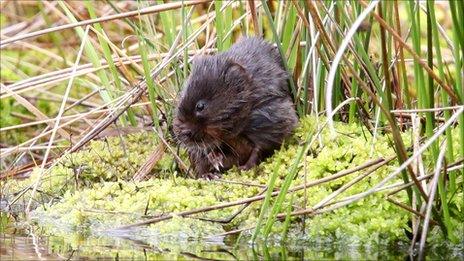Snack tubes aid water vole conservation work
- Published
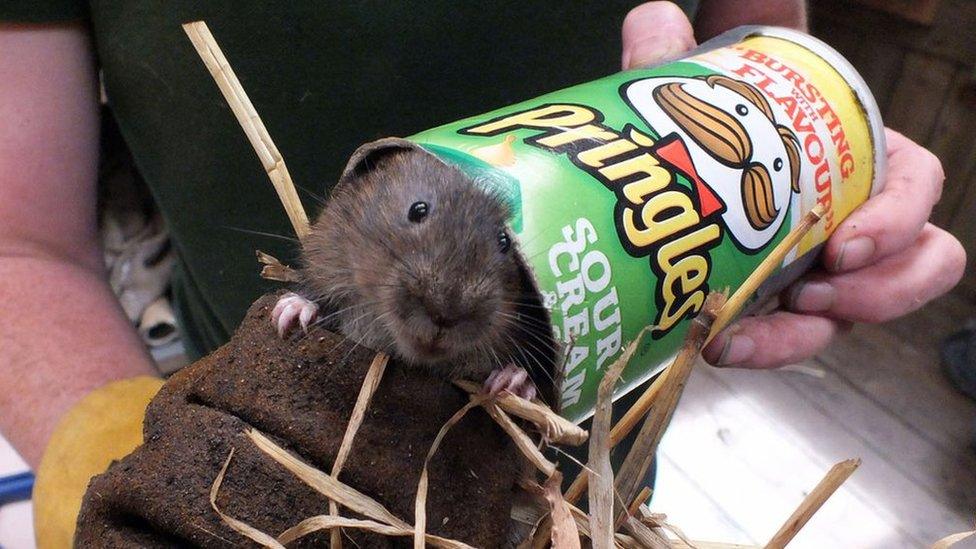
Cardboard snack tubes have emerged as an unusual but useful tool as part of water vole conservation work.
The Royal Zoological Society of Scotland staff and conservationists have found the tubs handy for catching and handling feisty voles.
"Sometimes they can be a bit nippy," said Roisin Campbell-Palmer, of RZSS, referring to the mammals' bite.
RZSS is involved in vole conservation projects in England and previously worked on one in the Trossachs.
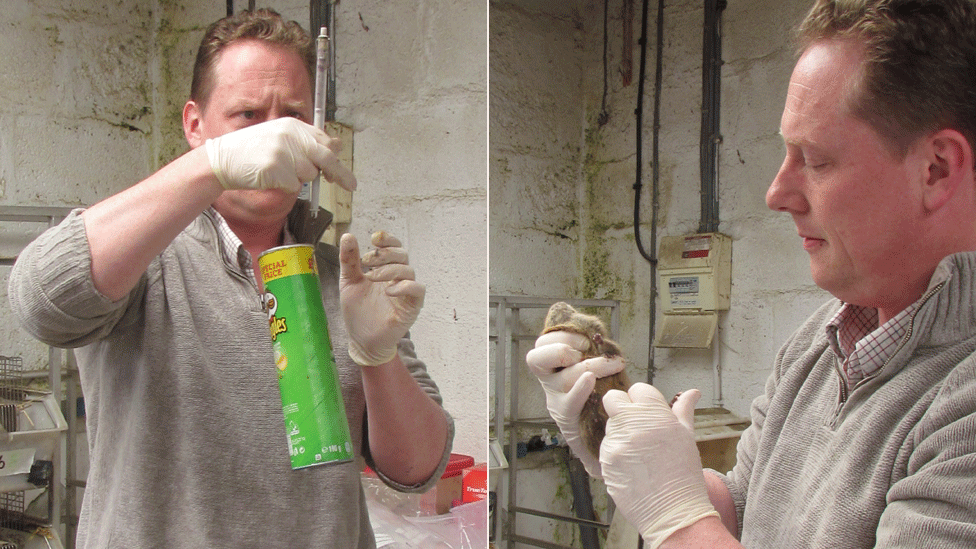
Vet Simon Girling weighs and inspects a water vole
Ms Campbell-Palmer and vet Simon Girling give a sample number of water voles a health check before groups of the animals, which have been reared in captivity, are released into wetlands in England.
To catch the voles for their medical, the snack tubes are laid in their enclosure and the mammals are drawn to the dark tunnels.
Ms Campbell-Palmer said: "The tubes also make it easier to weigh the voles."
For the Trossachs Water Vole Reintroduction Trial, external water voles were bred at the Edinburgh-based society's Highland Wildlife Park at Kincraig, near Aviemore.
Numbers of voles in the Loch Lomond and Trossachs National Park had been in decline because of predation by non-native American mink.
Other conservation projects have also been successful in boosting water vole numbers.
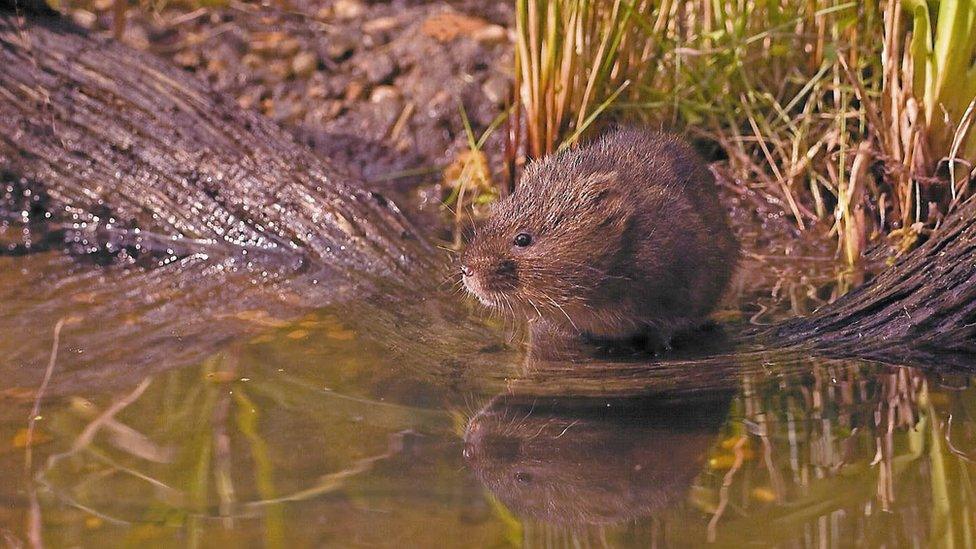
Water vole numbers in the UK have dropped by 90% over the past 40 years
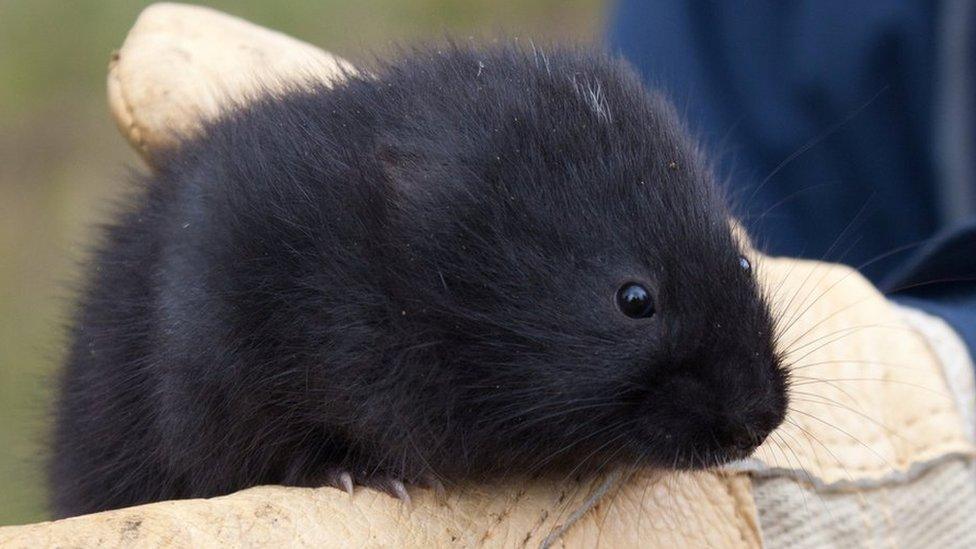
Water voles were found to have bounced back from decline at a reserve in Badenoch and Strathspey
In 2014, water voles were recorded in a part of the Highlands for the first time in 20 years.
The population was spotted at RSPB Scotland's Insh Marshes reserve in Badenoch and Strathspey.
The charity said it believed efforts to eradicate mink had helped to encourage the return of the rare animals.
In 2011, ecologists recorded for the first time water vole populations in the Beinn Eighe National Nature Reserve in Torridon.
Water vole numbers have dropped by 90% in the UK over the past 40 years, with predation a key factor for the decline.
The animals received legal protection in 1998.
- Published25 September 2014

- Published2 September 2014

- Published27 May 2011
